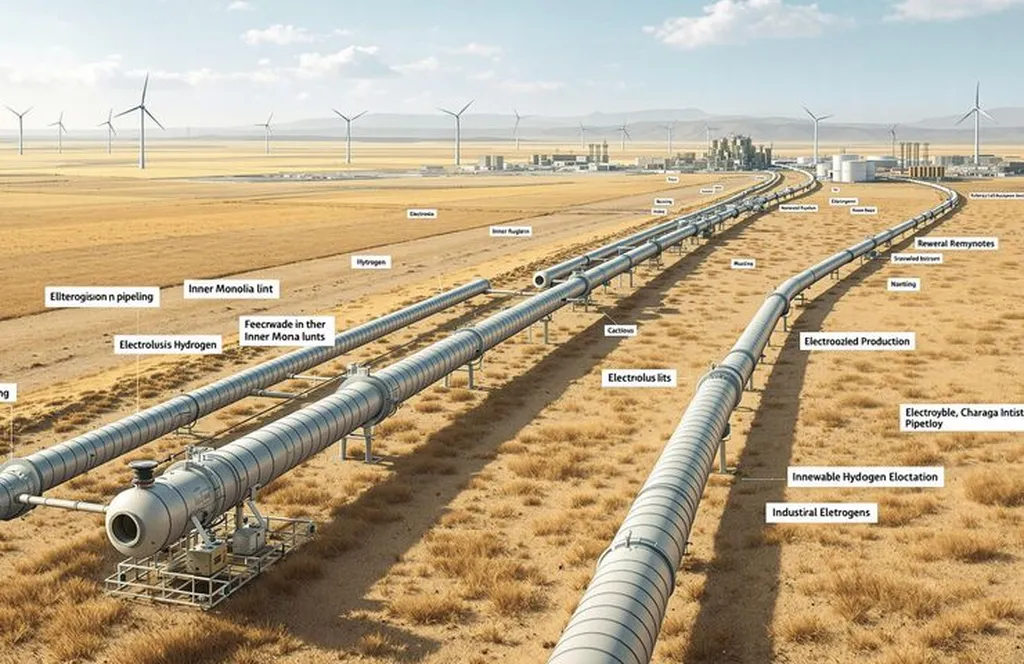In a groundbreaking study published in the journal *Oil Gas Storage and Transportation*, researchers have explored the feasibility of repurposing existing refined oil pipelines for methanol transportation, a move that could significantly enhance the efficiency and sustainability of energy infrastructure in China. The research, led by Cailin Wang from the College of Pipeline and Civil Engineering at the China University of Petroleum (East China) and the Shandong Provincial Key Laboratory of Oil, Gas and New Energy Storage and Transportation Safety, addresses the critical challenges and solutions associated with this transition.
Methanol, with its unique properties such as water solubility, strong polarity, volatility, flammability, and toxicity, presents distinct challenges when transported through pipelines originally designed for refined oil products like gasoline and diesel. “The primary concern is the increased risk of corrosion in metallic components and the swelling of non-metallic seals, which can compromise the integrity of the pipeline system,” explains Wang. The study meticulously evaluates the adaptability of key equipment, including storage tanks, transfer pumps, valves, and flow meters, to ensure safe and efficient methanol transportation.
The research team developed a comprehensive evaluation strategy focusing on three key areas: material adaptability, functional adaptability, and safety and environmental protection adaptability. Material adaptability involves assessing the performance and lifespan of anti-corrosion coatings, metallic materials, and non-metallic sealing materials. Functional adaptability examines the floating roof of storage tanks, the anti-cavitation performance of transfer pumps, and the sealing performance of key equipment. Safety and environmental protection adaptability evaluates the adaptability of the storage tank breathing system, exhaust gas recovery system, leakage monitoring system, and emergency response plans in a methanol environment.
Based on their findings, the researchers recommend several critical improvements. For instance, methanol storage tanks should be constructed from stainless steel or carbon steel with fluoride or epoxy-modified coatings. Sealing components should employ polytetrafluoroethylene or other materials resistant to methanol swelling. Transfer pumps and valve bodies should be made from highly corrosion-resistant materials like 316L stainless steel. Additionally, storage tanks should feature steel explosion-proof internal floating roofs and multiple sealing systems to enhance airtightness. Transfer pumps require optimized inlet conditions and dynamic pressure/flow regulation algorithms to suppress cavitation and reduce oil mixing during pumping. Valves should incorporate zero-leakage sealing and fire/explosion protection for rapid emergency shutdown.
The study also emphasizes the need for improved safety systems across material selection, sealing control, leakage monitoring, volatile organic compound (VOC) recovery, and emergency response. “By establishing a robust adaptability evaluation and improvement strategy, we can support the batch transportation of methanol via refined oil pipelines, advancing the evolution of oil and gas pipeline systems toward multi-medium and new energy transportation,” Wang asserts.
The implications of this research are far-reaching for the energy sector. As the demand for sustainable energy solutions grows, repurposing existing infrastructure for methanol transportation could offer a cost-effective and environmentally friendly alternative. This approach not only maximizes pipeline asset utilization but also supports long-distance, large-scale methanol storage and transportation, contributing to the sustainable development of the energy sector.
The study provides valuable technical guidance for industry standards and paves the way for future developments in energy infrastructure. By addressing the challenges and proposing practical solutions, this research offers a blueprint for the safe and efficient transportation of methanol, ultimately supporting the transition to a more sustainable energy future.

